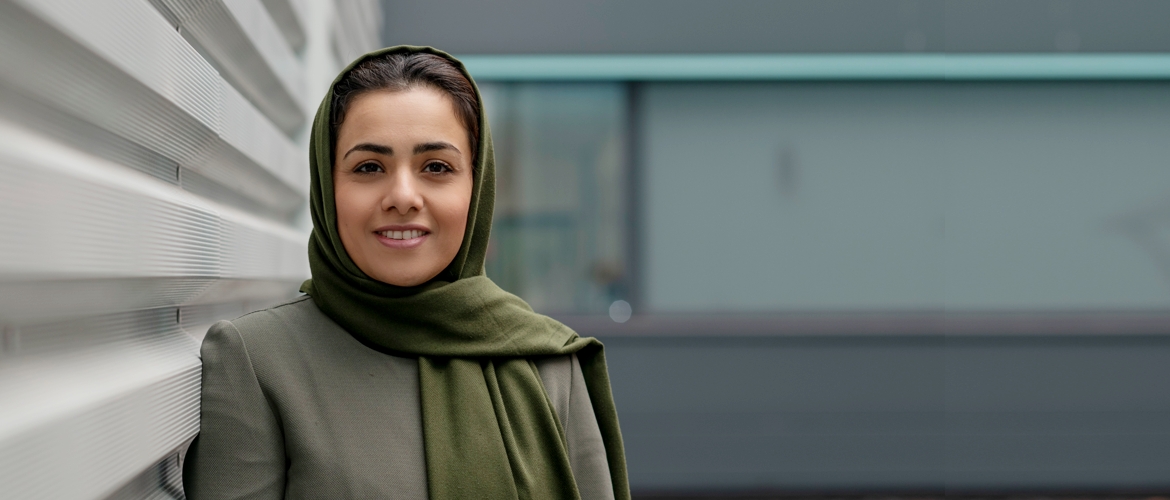Dr Sara Sangtarash

Dr Sara Sangtarash
Assistant Professor and Leverhulme Fellow
Materials and devices for quantum switching and sensing
Sara dot Sangtarash at warwick dot ac dot uk
+44 (0) 24 7652 4714
Biography
Dr. Sangtarash is an Assistant Professor in Nanoelectronics and Leverhulme Fellow in the School of Engineering at the University of Warwick. She obtained her PhD from Lancaster University as a Marie-Curie Early Stage Researcher, developing the theory of nanoscale transport, within the EU Innovative Training Network MOLESCO“Molecular-scale Electronics: Concepts, Contacts and Stability” . She was awarded the Lancaster JUNO Prize for research excellence in 2016. After finishing her PhD, she became a Senior Research Associate at Physics department, Lancaster University and in 2018 she awarded a Leverhulme Trust Early Career Fellowship working on material engineering for high-performance molecular-scale thermoelectricity. Dr Sangtarash joined the University of Warwick in 2020.
Research Interests
|
|
|
Research Overview
Magic ratios and mid gap theory for molecular electronics
Magic ratio theory provides a simple but accurate design tool to predict electrical codncutance and thermoelectricity in graphene like molecules.
Selected related publications
- S Sangtarash, Theory of mid-gap quantum transport through single molecule:new approach to transport modeling of nanoelectronic devicesLink opens in a new window, PhD thesis, 2017.
- S Sangtarash, et al., JACS, 2015. DOI: 10.1021/jacs.5b06558Link opens in a new window.
- S Sangtarash, et al., Nanoscale, 2016. DOI: 10.1039/C6NR01907BLink opens in a new window
- Y Geng, et al., JACS, 2015. DOI: 10.1021/jacs.5b00335Link opens in a new window
- S Sangtarash, et al., Phys. Chem. Chem. Phys., 2018. DOI: 10.1039/C8CP00381ELink opens in a new window
-
A Daaoub, et al., Angew. Chem. Int. Ed., 2023. DOI: 10.1002/anie.202302150nk opens in a new window
Graphene nanoribbon electronics
Graphene nanoribbons (GNRs) are quasi one-dimensional single-atom-thin carbon-based nanostructures. Their electronic properties can be controlled by engineering their shape and edge structure which makes them attractive for nanoelectronic applications.
Selected related publications
- ML Abbassi, et al, ACS Nano, 2020, DOI: 10.1021/acsnano.0c00604Link opens in a new window
- P Rémy, et al. JACS, 2020, DOI: 10.1021/jacs.0c03946Link opens in a new window
- ML Abbassi, et al, Nature Nanotechnology, 2019, DOI: 10.1038/s41565-019-0533-8Link opens in a new window
- J Zhang, et al, Nature Electronics, 2023. DOI: 10.1038/s41928-023-00991-3
Quantum interference for molecular electronics
Quantum interference can be used to enhance electronic properties of molecular junctions at room temperature.
Selected related publications
- S Sangtarash, 2021, arXiv:2102.09936Link opens in a new window
- W Chuanli, et al. Nano Letters, 2020, DOI: 10.1021/acs.nanolett.0c02815Link opens in a new window
- S Sangtarash, et al. Nanoscale Advances, 2020, DOI: 10.1039/C9NA00649DLink opens in a new window
- Bai et al, Nature Materials, 2019. DOI: 10.1038/s41563-018-0265-4Link opens in a new window
-
S Naghibi, et al., Angew. Chem. Int. Ed., 2022. DOI: 10.1002/anie.202116985
Teaching Interests
ES191: Electrical and Electronic Circuits
ES195: Materials for Engineering
ES197: Systems Modelling, Simulation and Computation
Publications
For full list visit: https://scholar.google.com/citations?user=4dOA1MoAAAAJ&hl=en
Projects and Grants
- Horizon Europe EIC PathFinderOpen - UKRI InnovateUK Guarantee Scheme, Co-investigator, No: 101099098
Project Title: Atomically Precise Nanoribbons Quantum Platform (ATYPIQUAL).
Duration: 01/10/2023 - 31/03/2027 - The Leverhulme Trust Early Career Fellowship, (Covid Extension)
Duration: 01/05/2022 - 30/04/2024 - The Leverhulme Trust Early Career Fellowship, Principle investigator, No: ECF-2018-375
Project Title: Quantum engineering of high-performance molecular-scale thermoelectricity.
Duration: 01/05/2019 - 30/04/2022
